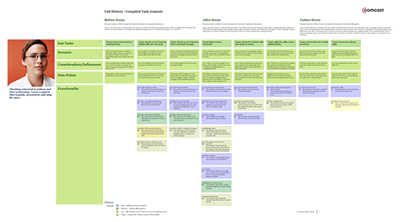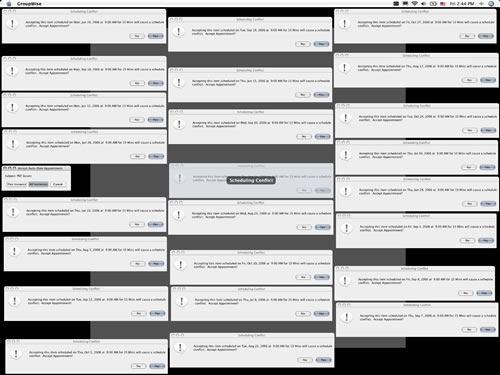“When you treat estimates as promises instead of guesses, you bind your worth as a worker to it. If you do not meet your own deadline, you are a failure. And since nobody likes to be a failure, they’ll indulge in risky behavior to avoid it, like burning the midnight oil and checking in bad code with scanty or no tests.”
David Heinemeier Hansson, It’s not a promise, it’s a guess
posted by
jason
on Wednesday, Feb 03, 2010
“This feature provides the customer with a considerable length of hanging rope and foot-loving ammo.”
Team member, summarizing decisions in a meeting where a potentially dangerous feature request was discussed
posted by
ted
on Friday, Nov 30, 2007
Facinating article in Wired magazine called Halo 3: How Microsoft Labs Invented a New Science of Play. Wired takes a close look at Bungie Studios, the makers of the massively huge Halo video game series, and how the Microsoft-owned company utilizes state of the art usability labs to test their video games. It appears Bungie is following some principles of the agile software development methodology, with constant revision and tweaking in response to an extremely detailed look into how players move through the game. It’s obvious the games would be nothing if not tested this way. Pretty interesting look into how video games are designed and refined.
posted by
jason
on Saturday, Sep 01, 2007
Check out picnik. That is one impressive flash app. Great first-time user experience. I love the big, attractive, clearly labeled buttons, the undo, the flickr integration and the simplicity. Not only online apps can learn from this, but some desktops apps can too.
posted by
tadd
on Saturday, Mar 03, 2007
Speaking of virtualization, Parallels just released the final bits of their latest Mac release. Lots of improvements, but coherence alone is worth the free upgrade. I’ve been running the pre-release builds and been very pleased with the improvements.
posted by
tadd
on Tuesday, Feb 27, 2007
Earlier today I had the pleasure of leading a user acceptance test of our facilities application. We work with users constantly, but this is the first time I put this work in front of a room full of people who had never used my application. The result? They loved it! Our long hours of research and iterative prototyping paid off big time as we observed smiles and nodding heads all around (in agreement, not yawns).
As I walked the room observing these people using our application, I began to see even more real-life situations where the app will improve their daily work. This is an app that will help manage the many properties and facilities of our Church, and thousands of people around the world will be affected by these little pixels I sweat over every day.
I realized again that as designers we have the unique ability to improve the lives of our users. Especially designing applications, the designer is in a position to help the user work better, faster, and more efficiently. Even the slightest design element can add or subtract seconds or minutes from the user’s tasks, resulting in more or less productivity – a fact brought home again today seeing how these real people were using my work.
One specific set of screens will be used hundreds of times by each user over a few weeks of the year. If I can save that user one minute with a better design, he will save 100 minutes that year. There are several dozen users in his position, so that one design can save several days of time.
Another more dramatic example is seen in another of our screens, designed to aid in the scanning of millions of paper documents. Each of the millions of documents has to be tagged and logged into the system prior to being scanned en masse. If my screen can shave off one second for every million documents tagged, I will have saved them 2778 hours of work.
That’s 347 work days, almost a year and a half of work.
Of course, the validity of that data can be questioned, as there are humans involved and those things can never be truly estimated.
But the point is valid. Imagine the amount of time saved or lost by design decisions made in mega-applications like Microsoft Word or Gmail. Balance that against the time saved by having word processors and email in the first place. Interesting thinking.
So take a few extra minutes the next time you’re designing an application that will be used every day. Try to shave off a second or two. The result of your few moments of thought could mean years to your users.
posted by
jason
on Wednesday, Dec 20, 2006

The The Task Analysis Grid, from Todd Warfel (via Airbag). Looks like a really cool way to record and track user tasks – broken into sub tasks, scenarios, influencers, pain points, and functionality.
posted by
jason
on Thursday, Dec 14, 2006
Skype 2.0 for Mac OSX now supports video along with free computer to land-line calls through 2006 (Seems to work out of the gate without configuration).
posted by
john
on Monday, Oct 30, 2006

Groupwise on OSX (!?) – after selecting “accept all instances” button. (large version)
posted by
john
on Friday, Oct 27, 2006

